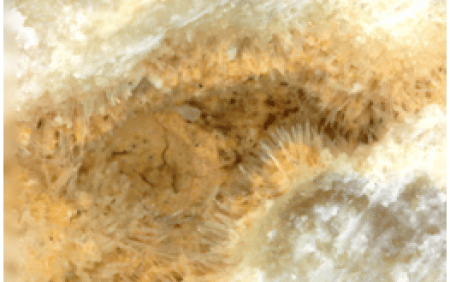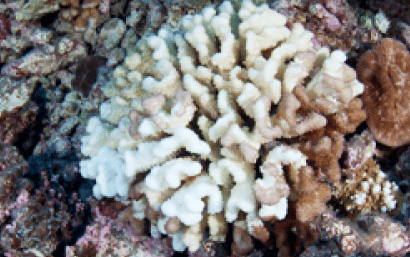ENVITOP applications
The skills developed around isotope geochemistry within the ENVITOP platform have numerous applications that fall into two main categories: dating by radiochronology and tracing sources of matter in a geological context.


Absolute dating by radiochronology
The principle of radioisotope dating is based on the measurement of natural radioactivity, the intensity of which slowly decays over time. As the decay rates depend on the elements studied, they offer a very wide range of time scales, from the instantaneous to ten billion years. The natural palaeochronometers used (uranium-thorium, uranium-lead, lead-lead, rubidium-strontium, etc.) are used in a variety of approaches in geology, hydrology, palaeoclimatology and archaeology.
The uranium-thorium method covers time periods ranging from a few thousand to a few hundred thousand years. Applied, for example, to the dating of coral reefs, it makes it possible to reconstruct the fluctuations in sea level caused by glacial and interglacial cycles. A brief acceleration in the rise of the eustatic sea level during the last deglaciation has been demonstrated. In addition, measurements on fossil corals were compared with dates obtained by the carbon-14 method, thus improving the performance of both techniques. The study of corals and microatolls has also provided an unprecedented level of detail on the recent evolution of ocean temperatures and on the links between global climate and local tectonics.
The uranium-lead method is commonly used to date rocks between one million and several billion years old. It is particularly applicable to the study of deep carbonates and the evolution of natural hydrocarbon reservoirs. As the geophysical properties of these reservoirs change over time, the establishment of a chronology of these phenomena is of crucial interest for their understanding.
These dating methods still allow the measurement of material transfer rates in geological systems. The dating of stalagtites and stalagmites, which constitute precious palaeoclimatic archives, is advantageously done by the uranium-thorium method. Many other applications benefit from it, such as the study of travertine crystallisation or calcite formation in sedimentary basins.

Isotope tracing of materials and fluids in the environment
The measurement of strontium and neodymium isotopes makes it possible to determine the origin of calcium in carbonates, while the measurement of silicon, zinc, copper and iron isotopes, particularly in soils, provides a better understanding of geochemical processes, particularly in polluted environments.
Hydrogeology also uses isotope analysis for the geographical tracing of material flows. Studies on continental, lake, marine and oceanic water circulation take into account strontium, neodymium, lead, uranium and radium isotopes. These markers make it possible to specify the functioning of lakes, the fate of aquifers, the evolution of delta regimes and the feeding of lagoons. Thus, the study of Lake Chad provided an opportunity to draw up a complete hydrological assessment of its watershed.
Finally, archaeological excavation programmes also use strontium, neodymium and lead isotopes, and have documented the occupation of several ancient Mediterranean ports.

